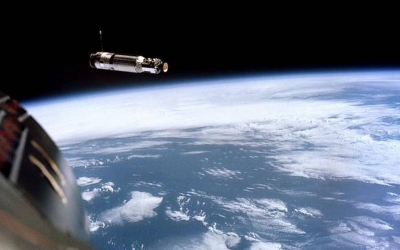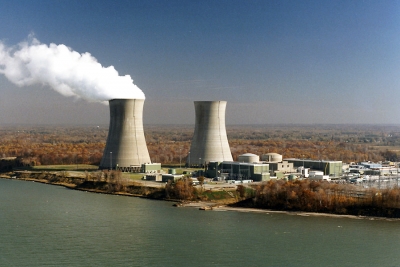A milestone and an in-flight emergency

Neil Armstrong’s name will forever be enshrined in the annals of human spaceflight as the first person to land on the moon and walk on the lunar surface as space commander of the Apollo 11 mission of 1969. The Apollo 11 mission, however, wasn’t the first time Armstrong went to space. Armstrong was also part of the Gemini VIII mission that was equally eventful.
Bridging two programmes
The Gemini programme was conceived as a bridge between the Mercury and Apollo programmes. This meant that it was primarily to test equipment and various mission procedures while in Earth orbit and provide invaluable training experience for both astronauts and ground crews ahead of the Apollo missions. In that way, the Gemini VIII mission ticked a lot of boxes as it not only enabled another key spaceflight technology milestone for the U.S., but also tested the astronauts on-board and the ground crew involved with an in-flight problem, often quoted as the first emergency in space.
Gemini VIII’s crew consisted of American astronauts Neil Armstrong and David Scott. A member of the second group of NASA astronauts, Armstrong was a formal Naval aviator. Scott, who was the first member of the third group of astronauts to fly in space, was a U.S. Air Force pilot.
Complex countdown
With multiple counts running simultaneously involving both the Atlas Agena and Gemini Titan rockets and spacecraft on March 16, 1966, the countdown for the Gemini VIII mission was one of the most complex conducted till then. The countdown was successful as the Agena lifted off at 10 a.m. EST and the Gemini took off 101 minutes later.
As Gemini VIII’s primary mission was to perform rendezvous and four docking tests with the Agena target vehicle and to execute extravehicular activity (EVA), its orbital chase of Agena was on. Less than four hours into the mission, Armstrong and Scott had a solid radar lock with the Agena as they trailed it by 288 km. This was good news as it meant that the radar instruments onboard were working as expected.
“A real smoothie”
When they were 122 km away, they had a visual of the Agena. With Scott calling out radar range and closing rates, Armstrong judged the braking action by eye with the target in sight. Rendezvous was soon possible as Gemini achieved station-keeping with Agena at 150 feet.
Following a 35-minute fly around during which the astronauts took close-up looks of the Agena and deemed it safe to link up, they waited for the go-ahead from Mission Control. When they were cleared for docking, Armstrong achieved it and radioed back saying “It was a real smoothie.”
Not so smooth, after all
Shortly after docking, however, the Gemini capsule and target vehicle began tumbling. Armstrong used the Gemini’s orbital attitude and manoeuvring system (OAMS) to control the tumbling, but the rolling began immediately and Gemini VIII went out of range of ground communications.
While it was later confirmed on investigation that an OAMS thruster was firing erratically, probably due to short circuit in the wiring, the crew blamed the Agena as the scene was unfolding and hence went ahead and undocked. This, however, led to Gemini’s rate of spin accelerating quickly as the added mass of Agena was no longer there.
When Gemini VIII came in range of a tracking ship stationed southwest of Japan, Scott communicated that they were having serious problems. The astronauts’ vision became blurred by now as the spin rate approached one revolution per second. The tumbling had to be stopped.
Quick thinking
With some quick thinking, Armstrong turned off the entire OAMS and then used the re-entry control system (RCS) to regain control of the spacecraft and stop the spin. As Mission Control were aware that Armstrong had utilised 75% of the re-entry manoeuvring propellant to stop the spin, they too had to make some fast decisions. Mission rules dictated that the crew must be brought home once RCS was activated and the decision made stuck to those rules.
Ten hours and 41 minutes after liftoff, Gemini VIII’s splashdown occurred within 3.2 km of the predicted impact point. Once spotted in the water, three U.S. Air Force pararescuers jumped into the sea from an aircraft. They attached a floatation collar to the capsule and assisted Armstrong and Scott while waiting for pickup.
While the emergency meant that some of the mission objectives were forced to be abandoned, the primary target of docking with an uncrewed spacecraft had been achieved. The quick thinking and action of the crew and ground control ensured nothing untoward happened, meaning that there was more to be learnt and gained eventually.
Both Armstrong and Scott became heroes following this episode. Scott flew two more missions after Gemini VIII – Apollo 9 (first Earth orbital qualification test for Apollo spacecraft) and Apollo 15 (first extended scientific exploration of the moon). Armstrong, as you know, became the first person on the moon during the Apollo 11 mission.
Picture Credit : Google







